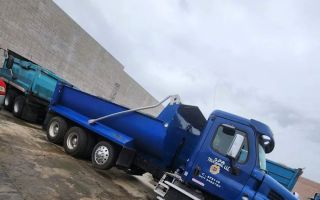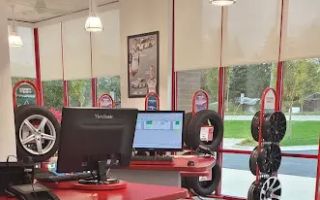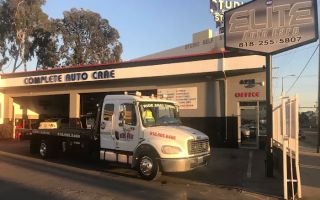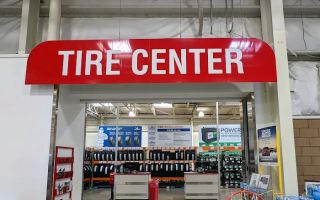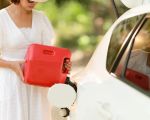Is There a Limit to How Much Fuel Can Be Delivered? Understanding Fuel Delivery Limits
- Understanding Fuel Delivery Services
- How Much Fuel Can Be Delivered to Your Vehicle?
- Factors Affecting Fuel Delivery Limits
- Emergency Fuel Delivery Services in Real-Life Situations
- Fuel Delivery Services: How to Choose the Right One
Running out of fuel is one of the most inconvenient situations for any driver, and having the option to get fuel delivered to you can be a lifesaver. However, many people wonder if there’s a limit to how much fuel can be delivered. In this article, we will explore the concept of fuel delivery services, the factors that determine how much fuel can be provided, and share some real-life examples to illustrate how emergency fuel delivery works. We’ll also provide tips for choosing a reliable fuel delivery service and offer recommendations on how to make the most out of this convenient service.

Fuel 4
720 Tonnelle Ave, Jersey City, NJ 07307, USA
Understanding Fuel Delivery Services
Fuel delivery services are designed to help drivers who run out of gas on the road, at home, or even at work. Instead of waiting for a tow truck or heading to a gas station, fuel delivery services bring fuel directly to your vehicle. These services have gained popularity due to their convenience and quick response times, especially in urban areas or places where gas stations are far apart.

Nearest gas station
353 Smithtown Blvd, Ronkonkoma, NY 11779, USA
1. How Fuel Delivery Works
Fuel delivery services typically operate by using specially equipped vehicles that carry gasoline or diesel fuel. Once a customer requests a fuel delivery, the service vehicle arrives at the specified location, and the fuel is dispensed directly into the vehicle's tank. The delivery is generally quick and can get drivers back on the road in a matter of minutes.
2. Types of Fuel Available for Delivery
While gasoline is the most common fuel delivered, many services also offer diesel fuel for commercial vehicles and certain types of cars. Depending on the service, customers may be able to choose the type of fuel they need, and some services even offer premium options for high-performance vehicles.
How Much Fuel Can Be Delivered to Your Vehicle?
When it comes to fuel delivery, one of the most common questions is how much fuel can be delivered at once. While the exact amount varies depending on the service, most fuel delivery services offer anywhere from 2 to 5 gallons of fuel. This is usually enough to get your vehicle to the nearest gas station or allow you to drive for a short distance until you can refuel properly.
1. Typical Fuel Delivery Amounts
Most services limit deliveries to a few gallons for safety reasons and to avoid overloading the delivery truck. However, if you need more fuel (for example, for large commercial vehicles or emergency situations), you may be able to arrange for a larger delivery with prior notice or by contacting a specialized service.
2. Can You Get More Than a Few Gallons Delivered?
While most fuel delivery services offer a standard amount, larger deliveries can be arranged in some cases. For instance, commercial vehicles or fleet management services may require more fuel. In such cases, fuel companies often make arrangements for larger, customized deliveries. It’s always a good idea to check with your delivery provider beforehand to see if they can accommodate your specific fuel needs.
Factors Affecting Fuel Delivery Limits
Several factors can influence how much fuel can be delivered to a vehicle. Understanding these factors can help you better plan for fuel delivery services, especially in emergency situations.
1. Safety Regulations
Fuel delivery services must adhere to strict safety regulations set by government authorities. These regulations often limit the amount of fuel that can be delivered at once, especially in residential areas or densely populated locations. The goal is to minimize risks related to fire hazards or hazardous materials.
2. Vehicle Size and Fuel Tank Capacity
The size of the vehicle and its fuel tank capacity also play a role in the amount of fuel that can be delivered. Smaller passenger vehicles usually need only a few gallons to get back on the road, while larger trucks or RVs may require more fuel. For vehicles with larger tanks, customers can often arrange for larger deliveries or multiple trips.
3. Distance and Location
The location of your vehicle is another critical factor. Fuel delivery services typically provide fuel to vehicles within a specific geographic area. If you're located in a remote area, you may need to arrange for additional services, or you may not be able to get a fuel delivery at all.
Emergency Fuel Delivery Services in Real-Life Situations
Fuel delivery services are often used in emergency situations where drivers run out of gas on the road. Here are some real-life examples of how fuel delivery can save the day:
1. John’s Experience with Emergency Fuel Delivery
John was driving on a long road trip when he suddenly realized that his fuel gauge had malfunctioned. He ran out of gas in the middle of a remote area with no gas stations nearby. Thankfully, he was able to contact a local fuel delivery service, and within 30 minutes, a truck arrived to deliver enough fuel for him to reach the nearest station.
2. Sarah’s Business Fleet Fuel Delivery
Sarah manages a fleet of delivery trucks for her business, and one day one of her drivers ran out of fuel in the middle of a busy day. She had a fuel delivery service on standby, and the driver received a quick refuel that allowed him to continue his route without significant delays. This saved Sarah valuable time and kept her business running smoothly.
Fuel Delivery Services: How to Choose the Right One
Choosing the right fuel delivery service is important to ensure reliability and safety. Here are some things to look for when selecting a provider:
1. Reputation and Reviews
Look for a fuel delivery service with a good reputation and positive customer reviews. A reliable provider will ensure timely deliveries and handle your fuel needs safely. Word of mouth and online reviews are great resources for learning about the quality of service.
2. Available Service Areas
Make sure the fuel delivery service operates in your area. Some providers have limited service areas, so confirm that they can reach your location quickly, especially if you are in an emergency situation.
3. Pricing and Payment Options
Check the pricing and payment options offered by the fuel delivery provider. While many services offer flat rates for a set amount of fuel, others may charge based on distance traveled or the amount of fuel required. It’s also helpful to inquire about payment methods, especially if you need emergency delivery after hours.
If you’re looking for reliable fuel delivery services, consider reaching out to Rescue & Towing. Their team provides fast, professional fuel delivery services to get you back on the road quickly and safely. Learn more today and make sure you're prepared for any emergency fuel situation!

